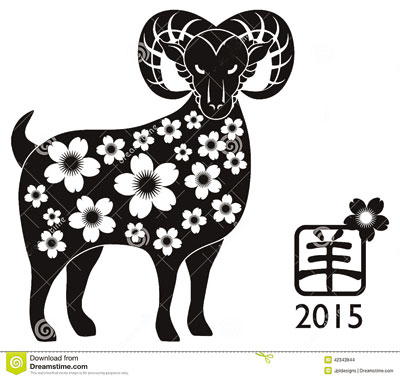
THE zodiac animal of China’s coming Lunar New Year has caused much confusion in the English-speaking world, as its translation results in at least two candidates: sheep or goat.
Huang Yang, a prominent researcher on the role of sheep/goat in Chinese culture, says tracing the origin of this year’s zodiac symbol could be difficult, as it first appeared after the Shang Dynasty (1600-1046 B.C.), when the Chinese people did not differentiate between sheep and goat in language or in sacrificial offerings.
Chinese folklorists say the symbol can be either a sheep or a goat, but more likely goat, given the latter’s popularity as a farm animal among Han Chinese.
The Chinese lunar calendar assigns an animal symbol to each year in every 12-year cycle. Yet the Chinese character for the eighth zodiac animal is “yang,” which can refer to either of the two ruminants when used without attributes.
Both species have a long history of domestication in China and have appeared on oracle bone scripts and other artifacts since prehistoric times, according to Huang, who, in 2012, challenged the saying that Chinese are “descendants of the dragon” by arguing that the earliest Chinese actually worshipped the meek ruminants (mammals that are able to acquire nutrients from plant-based food).
“But if we judge from the fact that the Chinese zodiac is a Han tradition, yang are more likely goats, which are more common livestock for the Han Chinese,” he told Xinhua in a phone interview.
Shaggy sheep are a common sight in northern China’s prairies and were domesticated by Chinese earlier than goats, but goats are more commonly raised in areas populated by Han Chinese, Huang says.
Images on China’s zodiac stamps and papercuttings are often bearded goats. The replica of the yang bronze statue that once formed part of a zodiac fountain in the looted Old Summer Palace also has a goat head.
Fang Binggui, a folklorist based in Southeast China’s Fuzhou, says the image of the zodiac yang is open to regional interpretation. “People depict the zodiac animal based on the most common ‘yang’ in their region. So it’s often sheep in the north, while goats in the south.”
Few ordinary Chinese are troubled by the sheep/goat distinction.
“I’ve never thought about that question before. Do we have to tell them apart?” asks Chen Xufeng, an office clerk in Beijing.
“I’ve seen more goats in zodiac images, but I prefer to buy sheep dolls, as sheeps are more fluffy and lovely,” he says.
However, the ambiguity has whipped up discussion in the West. A story run by the Associated Press said this year’s animal “is subject to interpretation.”
“We just had this discussion a few weeks ago. What exactly is it?” AP quoted a worker in Brooklyn Chinatown as saying. “It can be a ram, sheep or goat — any ruminant mountain animal with horns.”
In England, the Manchester Evening News also posed the question: “Later this month, we will enter the Chinese Year of the Ram. Or should that be sheep? Or even goat?”
Other media outlets, including Bloomberg, have described the coming Lunar New Year as the Year of the Sheep, Goat or Ram.
Xiang Daohua, a teacher of Chinese language and culture at China Foreign Affairs University, believes cultural connotations should be taken into consideration in translation.
“The English word ‘sheep’ better fits the yang image in traditional Chinese culture, which is meek and even a bit weak,” he says.
(SD-Xinhua)
|

